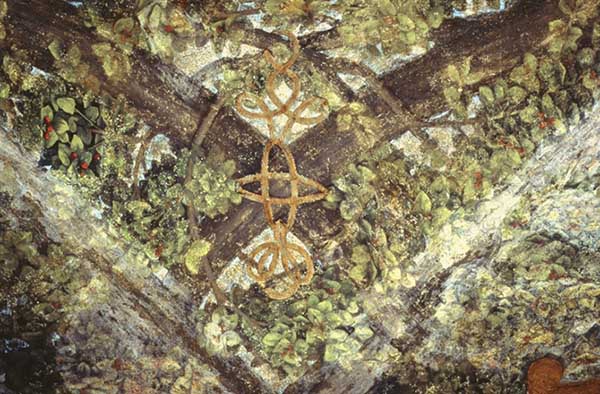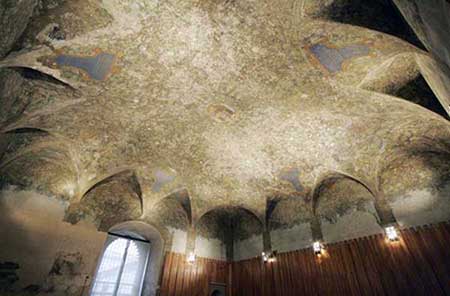Unearthed Beneath Paint

October 28, 2013
Researchers have discovered hidden messages in the works of Leonardo Da Vinci - perhaps containing the answers to humanity's origins and destiny. In 2005, I consulted with the History Channel interviewing the historians on a special called, "Decoding Da Vinci".
Personally, I believe Da Vinci's brain was more evolved allowing him to tap into the consciousness grids then creating what he saw in physical reality. If the brain is a computer, De Vinci had a more evolved computer. In today's world, one might call him a savant. This is not unlike Albert Einstein whose theories still remain valid decades after he passed.
Every now and again something by Leonardo Da Vinci is discovered in an ancient ruin. 2013 did not disappoint.

Photos: Lost da Vinci Artwork Unearthed Beneath Paint Discovery - October 28, 2013
Drawings sketched by Leonardo da Vinci are emerging from the walls of an Italian castle, announced restorers working on an elaborate fresco devised by the Renaissance master. One of most original paintings of the 15th century, the mural covers the vault and walls of the Sala delle Asse in the Sforza Castle in Milan. It depicts a garden pergola made of 16 mulberry trees bound together by a golden, knotted rope. The trunk of each tree rises as a column supporting 16 half-moon-shaped spaces above a Gothic vault, producing an evocative, fictive grove.
Now restorers might be able to bring to light extra sections of the original work, possibly providing further insights into Da Vinci's vision of the highly symbolic decoration.
The work was commissioned in 1498 by the duke of Milan, Ludovico Maria Sforza, nicknamed il Moro (the Moor) and was executed by Leonardo, who at that time was the court artist, and his assistants.
Experts agree the master's hand can be detected in a monochrome section of the fresco on the northeast and northwest corner of the room. The apparently unfinished work depicts sturdy roots bursting through rocks.
Preliminary analysis produced "quite interesting results," lending hope that the work will recover "important parts of the preparatory drawings," Marco Ciatti, superintendent of the OPD art restoration institute, said.
Leonardo's work in the Sala delle Asse, or Room of the Planks (after the wood panels that lined it) has remained largely unknown. In 1499 Milan was conquered by the French who stormed the castle. In 1706, when Milan was under the Austrian rule, the castle became soldier barracks and the Sala delle Asse was turned into a stable, its walls covered with abundant layers of whitewash.